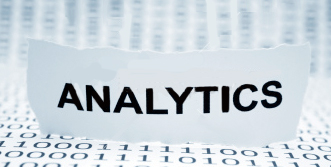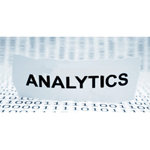

Every business has a treasure trove of data, from customer and transaction information to manufacturing and shipping statistics. The key is figuring out how to use past data to better the business’ future.
One strategy is for companies to use predictive analytics. This involves combing through past information to derive models and analyses that help project future outcomes. The goal is to learn from past mistakes and successes in order to know what to change and what to replicate.
Predictive analytics can be applied to all aspects of an organization. It can help in figuring out what customers want and don’t want, and also be applied to a business’ operations to maximize efficiency. It can help a business fend off problems before they even become an issue down the road.
Eric Siegel, a former Columbia University professor and founder of Predictive Analytics World, defines the data analysis method as The Power to Predict Who Will Click, Buy, Lie or Die.
“Predictive analytics is the technology that learns from data to make predictions about what each individual will do — from thriving and donating to stealing and crashing your car,” Siegel said in an interview earlier this year. “For business, it decreases risk, lowers cost, improves customer service, and decreases unwanted postal mail and spam.”
In order to harness this data, businesses have a number of predictive analytics tools and software at their disposal.
Predictive analytics tools and software
In order to actually apply predictive analytics to a business or organization, specialized software is needed. Offered by a wide variety of vendors, including IBM, SAP and SAS, predictive analytics software is what crunches the collected data to determine the specific answers a business is looking for.
While each software offering has different capabilities and user interfaces, the premise is the same. The software works by first analyzing all the information a company collects. This includes everything from sales and customer information to employee productivity and social media data.
The software then plugs that data into predictive models. Using specially created algorithms, the models are able to project future trends and problems, based on that past behavior.
For businesses, the models can help predict various consumer trends to help drive supply and marketing decisions, as well as employee productivity trends to help improve efficiency.
While predictive analytics software used to only be an option for larger organizations, recent developments to the software have made it more accessible to small businesses. These software options, which are available from vendors — such as Emanio and Angoss — are sold at a more affordable price and can be run from any personal computer or laptop computer, instead of needing to be installed directly to a company’s server.
Examples of predictive analytics
Originally used by large retailers and financial institutions, predictive analytics is being used today by businesses in every industry and of all sizes, with an eye on getting a jump on the competition.
According to IBM, businesses can use predictive analytics in a number of different ways, including:
While researching how companies were using predictive analytics to improve their organization, consulting firm Accenture uncovered several specific examples, including how Best Buy figured out that less than 10 percent of its customers were responsible for nearly 45 percent of its sales. That led to a redesign of their stores to better suit buying habits of their customers.
Accenture also found that the Italian restaurant chain Olive Garden used predictive analytic models to project food and staffing needs, which has led to a more efficient business.
The popularity of predictive analytics with businesses has led to other types of organizations using the software. For examples, healthcare firms are using predictive analytics to predict how certain drugs and therapies will be received by patients, and help doctors better detect early warning signs for life threatening diseases and illnesses.
Other organizations using predictive analytics are governmental bodies. They are using the software to help prevent crime, deliver social services and overall better serve the needs of its residents. For example, the city of Chicago used predictive analytics to help curb a lost garbage receptacle problem. The city found that the lost and stolen cans directly correlated to when streetlights were out.
Moving forward businesses and organizations not using predictive analytic software to help drive their decisions are going to find themselves in the vast minority.
By: Chad Brooks, BusinessNewsDaily Contributor
Originally published at businessnewsdaily
Follow Chad Brooks on Twitter @cbrooks76 or BusinessNewsDaily @BNDarticles. We’re also on Facebook & Google+.